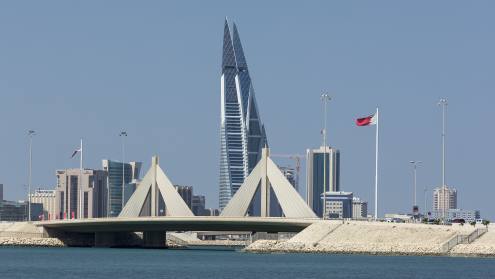After years of meteoric growth, China’s economy has been experiencing something of a slowdown in the past few years. Economic growth fell to 7.5% in the three months ending June 2013 after showing a steady decline in growth for 10 consecutive quarters. This marks the longest such slowdown since China began the long process of embracing free-market principles more than 30 years ago.
Also in this report
However, while progress has been slow to date, China has been showing an increased desire to open up its financial markets, a desire that is being significantly strengthened by the current slowdown.
"China can only sustain economic growth by transforming its growth model. Financial reform is one of the important parts of China's economic structural reform," said Chinese premier Li Keqiang, speaking at a World Economic Forum held in the north-eastern Chinese port city of Dalian on September 11 this year.
QFII and RQFII
Central to these reforms is a desire to liberalise China’s financial markets and improve inbound investment into its capital markets. To this end, the establishment of the Qualified Foreign Institutional Investor (QFII) scheme and the Renminbi Qualified Foreign Institutional Investor (RQFII) have proven especially important. The success of the two schemes to date can be measured by the fact that foreign investors have already invested tens of billions of dollars in shares and other securities.
Set up in 2002, the QFII scheme allows foreign-denominated capital to be converted into renminbi before being invested in China’s stock markets. Meanwhile, the RQFII scheme was launched in 2011 in order to serve as a channel for foreign investors to use offshore renminbi to invest in China’s stock markets.
Since its inception the QFII quota has been increased three times, but the most dramatic increase occurred in July 2013 when the Chinese authorities announced that the QFII quota would be enlarged from $80bn to $150bn.
At the same time, in an effort to step up the pace of renminbi liberalisation, Chinese authorities announced that the RQFII quota would be extended to Singapore, London and Taiwan. Furthermore, in March 2013, the Chinese Securities Regulatory Commission (CSRC) loosened the restrictions on the RQFII quota allocation. Initially the RQFII licences and quotas were only granted to offshore subsidiaries of Chinese asset managers and brokerages, but today all Hong Kong units of mainland commercial banks and insurance firms are eligible to apply for a quota.
“The pool of eligible applicants is expanding and we now expect to see US and European asset managers receiving licences,” says Ying White, a Beijing-based partner at law firm Clifford Chance. “Although it was established a while after QFII, the RQFII scheme has grown much faster and is playing a key role today in facilitating the two-way flow of the renminbi, which is very much needed if it is to become a global and convertible currency.”
Making it work
Part of the reason for the success of the RQFII scheme has been that it has worked hard on rolling out new funds and products over the past couple of years. Admittedly, the first batch of RQFII funds was considered disappointing by industry participants. Launched in February 2012, it comprised 19 funds that were limited in their exposure to a minimum of 80% bonds and a maximum of 20% equities.
However, the second batch of RQFII funds were deliberately targeted at meeting demand for higher yields and increased exposure to mainland equities. They included the launch of renminbi exchange traded funds (ETFs) which were desirable in that, unlike other synthetic A share ETFs, they were not based on derivatives. The roll out of the second batch of RQFII products was greeted with a much warmer reception, with quotas being allocated to the larger asset managers and comprising improved product differentiation.
According to one industry expert, a clear divergence is now emerging between the two schemes’ investment profiles. “In our view, we are seeing a gradual trend whereby RQFII is more geared towards asset managers while QFII is primarily reserved for asset owners such as sovereign wealth funds, pensions and endowments,” says Jonathan Ha, director of advisory services at Z-Ben Advisors.
In January 2013, $2.56bn in QFII quotas were awarded, with almost half being allocated to Gulf sovereign wealth funds in Abu Dhabi and Kuwait. “Asset owners are more likely to continue using the QFII channel because it’s a pretty stable system that allows for a specific type of investment into China. Whereas, RQFII is a very attractive route for asset managers, mainly because it is so product-specific,” says Mr Ha.
Opening up securities
Another important development in the market has been a decision by the Chinese regulators to start focusing their attention on nurturing inbound and outbound securities investment by individual investors. In April 2013, China introduced new regulations to permit Hong Kong, Macau and Taiwan residents to open trading accounts to trade A shares (yuan-denominated stocks) and to purchase mutual funds.
A shares were previously off limits to foreign individual investors who were only allowed to trade B shares – shares in companies based in mainland China that trade on either the Shanghai or Shenzhen stock exchanges.
In early 2013, Chinese authorities also revealed that they were in ongoing internal discussions about creating QFII2 and RQFII2 schemes, which, if brought into existence, would enable offshore individual investors to gain direct access to China’s securities market in the same manner as existing QFIIs and RQFIIs.
The Chinese authorities have also stated that one of their key aims is to expand cross-border investment from institutional investors into the retail investment sector, and an early milestone was reached in achieving this on August 30 when Beijing endorsed the study of a plan initiated by the Hong Kong government for the mutual recognition of fund products. Under the proposal, products approved by the Hong Kong regulators to raise funds on the mainland would not require further approvals by the Chinese regulator, and vice-versa.
The proposal forms part of the Closer Economic Partnership Arrangement (CEPA), which was signed by both the Hong Kong and Chinese governments on the same day. The arrangement also allows joint ventures involving Hong Kong securities firms to conduct a wider array of business as well as allowing their shareholdings in joint ventures to be raised from 49% to 51%.
“This programme looks to benefit the Hong Kong markets the most,” says Ms White at Clifford Chance. “It seems likely that Hong Kong funds will be recognised by the Chinese authorities but it will take a while for the Hong Kong Securities Clearing Company to be comfortable with Chinese funds because the rules governing them are a lot less sophisticated.”
Restrictions lifted
Chinese authorities have also been lifting restrictions on Chinese companies’ ability to invest in international markets. In May 2013, China’s Guotai Asset Management launched the country’s first cross-border ETF that targets the Nasdaq 100 Index. The move was considered a significant event for ETF market development in China, and other Chinese fund management companies have since signalled an interest in launching new products targeting Nasdaq indices.
In the first five months of 2013, funds invested into Chinese ETF products increased by 23.4% to $937.4bn, according to global fund management company BlackRock.
Increasing the trading of the renminbi through new products and in new markets is of course essential if China is serious about making the renminbi a significant globally traded currency. The renminbi currently accounts for 0.63% of all global payments, overtaking the New Zealand dollar and Russian rouble in February 2013 to become the 13th most used global currency.
Further good news for the renminbi came when the Chinese government announced that it is finally expediting the reforms process to relax controls over its capital accounts and exchange rate – reforms that investors have been pressing for for some time. The State Council announced in May 2013 that its objectives for 2013 include working out an operational plan to make the renminbi fully convertible under capital accounts and to establish a system that allows for outbound investment by individuals.
“[China] needs to open the capital markets and the political will is definitely there,” says Ms White. “Mr Li has publicly said that achieving renminbi convertibility is a high priority.”
A question of timing
Today, the question on everyone’s lips is how quickly the reforms will be implemented, especially in light of the political infighting taking place at the highest levels of government.
“The great battle over the past decade has been between the reformers and the old guard who want to keep the currency competitive,” says Simon Derrick, chief currency strategist at BNY Mellon. “But ever since the onset of the global financial crisis and the downgrade in the US’ credit rating in 2011, there has been a fairly clear drive towards liberalisation.”
As economic growth in China moves into a slower gear, calls for the implementation of free-market reforms are expected to intensify. Mr Li has argued that there is little scope for further government stimulus and has talked increasingly about the need for structural reform, going so far as to state “reform is the biggest dividend for China”.
The government clearly recognises that continued financial liberalisation will be key to promoting long-term growth. Consequently, there will be no shortage of new milestones being reached over the coming years as China’s financial markets seek to open up and better integrate themselves with markets across the globe.











